Classic Stovetop Mac & Cheese
I’m just gonna come right out and say it. When discussing cheese and pasta, sometimes one must be blunt.
I like stove-top macaroni and cheese more than baked macaroni and cheese.
This is the truth, straight from me to you.
I mean, that’s not to say I won’t consume a mound of baked mac rapidly if it’s served at a potluck, a cookout, or a picnic. And I won’t say no to a fancy mac, like this one I made last year. But the macaroni of my dreams is prepared on the stove-top: al denté, piping hot, and swimming in thin, just-a-little-bit-spicy, orange cheddar cheese sauce.
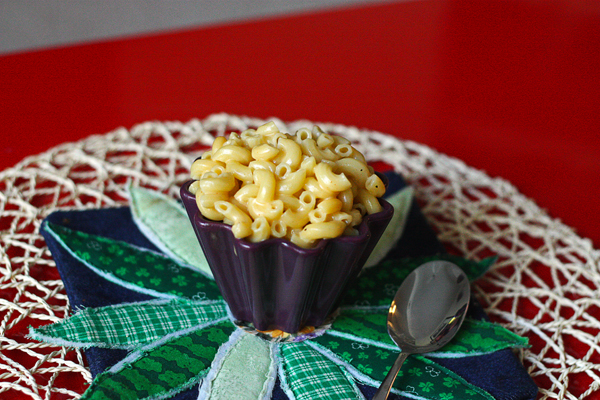
Is this a product of being raised on the blue box? Perhaps. Is this a product of wanting my pasta so firm that it nearly crunches between the teeth, a state that is nearly impossible to achieve when baking pasta? That’s probably reading too deeply into the whole thing. Maybe I don’t like the breadcrumbs that typically accompany a baked mac? Maybe I don’t like the waiting?
One significant downside of loving so much a mysteriously created product of food science is that it can be incredibly difficult to replicate at home. What the hell is that orange powder anyway? I theorize it must be fairy dust, for I have searched for years for a mac and cheese recipe that, if not identical, could at least be a satisfactory homemade replacement to the mac and cheese of my childhood.
Friends, I HAVE FOUND IT.
I beg, beg you to try this mac and cheese. It’s pretty dang easy, fast, and delicious. Like many good sauces, it starts off with a roux, which is a mixture of butter and flour used as a base for many different sauces. Don’t be scared of that fancy-sounding word though! You need not be a trained chef to create a roux. In fact, this was only my second or third time making one, and now I wonder why on Earth I’ve been avoiding them all these years.
In addition to the flour, this roux will involve some spices. Salt, pepper, ground mustard, and paprika accompany the flour, giving not only a little zip to the cheese sauce, but a little bit of extra color. You can add even more if you like your mac spicy!
To make a roux, melt the butter in a large frying pan and then add the flour mixture. You’ll mix it together to form a thick liquid. You can use a fork for this, but I adore my roux whisk. It’s a flat whisk designed exactly for roux-making, and they are easily available. This mixture will form a base for your sauce that will help it thicken once the milk and cheese are added.
Speaking of cheese, I wanted to make my classic mac with classic mac cheese, so I used half a pound of sharp, orange cheddar. I haven’t yet tried this recipe out with a mixture of other cheeses, but I imagine you could use just about whatever you want: white cheddar for sophistication, cheddar and parmesan for something punchy, gouda for something smoky and rich…
Now the noodles. Elbows aren’t actually my favorite shape of pasta, but they really do set the stage for a classic macaroni and cheese dinner, don’t they? Like I said, I like my noodles fairly firm, so I cook them just barely to al denté, usually the shortest amount of time recommended by the box. No harm in nibbling on some of the noodles to check their firmness before you finish cooking.
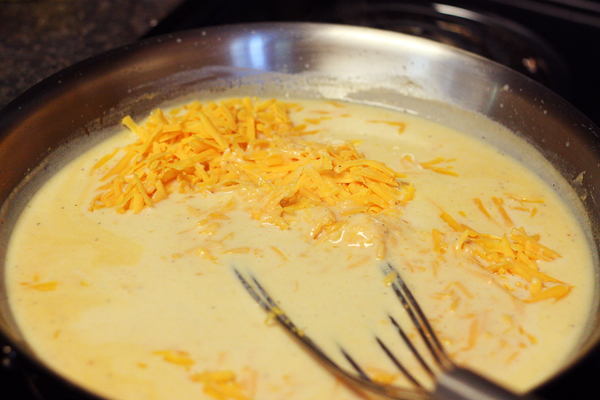
Once the noodles are done and the sauce is complete, the two are joined in one of the greatest arranged marriages of the culinary universe. And it doesn’t even require mysterious orange fairy dust.
Classic Stovetop Mac & Cheese
Adapted from Amanda’s Cookin’
You can use whatever variety – or varieties – of cheese that you like.
1/4 c all-purpose flour
1 tsp salt
1/2 tsp ground yellow mustard
1/2 tsp paprika
1/4 tsp black pepper
1/4 c unsalted butter
2 c milk (I used 1%)
8 oz cheddar cheese
1 lb elbow pasta
In a small bowl, combine flour, salt, ground mustard, paprika, and black pepper. Mix well with a fork and set aside. Measure out milk and grate the cheese and set aside.
Add butter to a large skillet or frying pan and heat over medium-low. While the butter melts, begin heating a large pot of water to a boil for the pasta.
Once butter has melted, add the flour mixture to the butter. Use a roux whisk or a large fork to mix, whisking constantly. The mixture will begin to smooth out. Once it has cooked for about three minutes, slowly add the milk, whisking the entire time. At some point, the water in the other pot will come to a boil. Add the pasta and cook to al dente.
Once all of the milk has been added to the roux, increase the heat slightly to just below medium. Whisking constantly, the mixture will begin to thicken to a consistency closer to cream than to milk. It should never come to a boil.
When the pasta is cooked to al dente, drain into a colander but do not rinse. The starch from the cooking water will help the cheese sauce to stick to the noodles. Return noodles to the pot and cover until the cheese sauce is ready.
Turn off the heat under the sauce mixture and add the cheese. Whisk for another minute or two until cheese has melted completely and the sauce is smooth. Pour over the drained noodles and mix well.

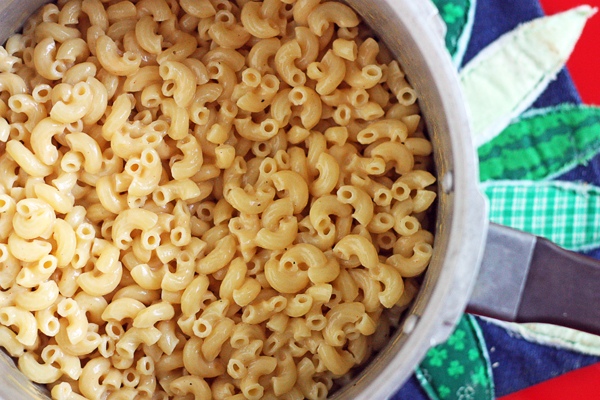
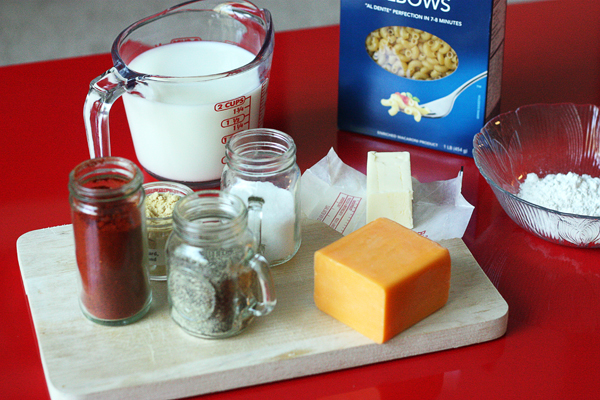
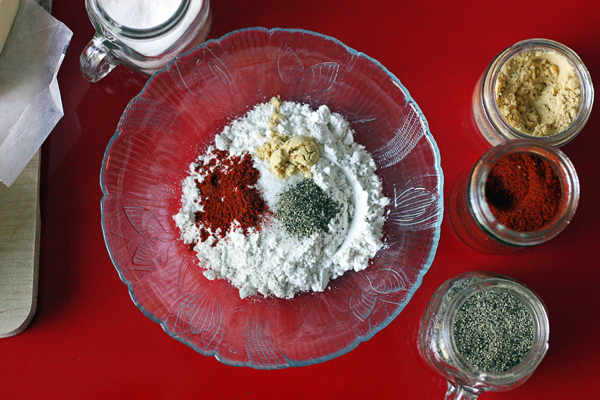
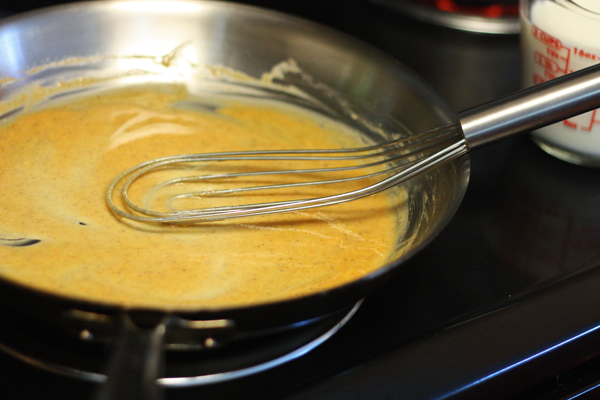
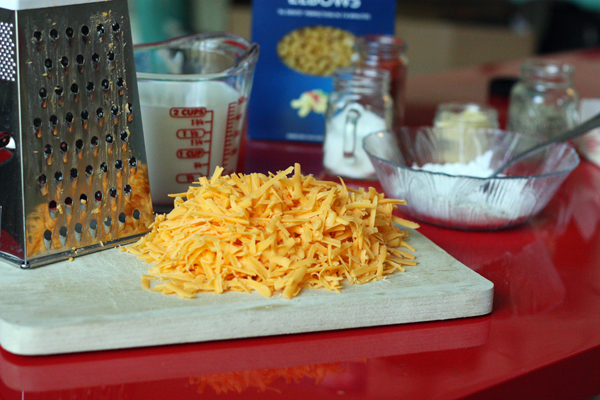

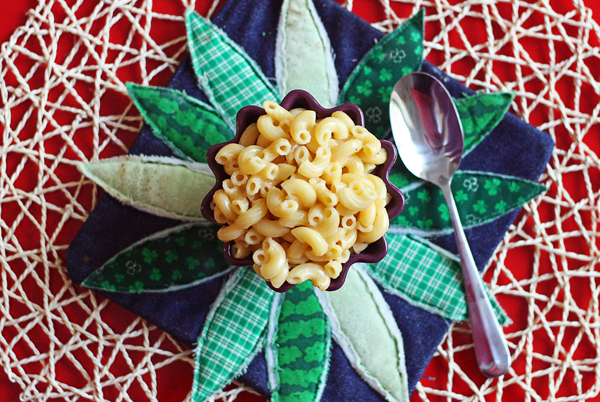
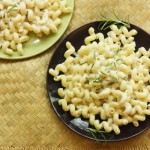
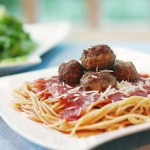
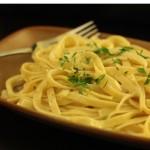
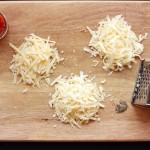
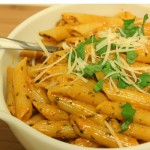
Tim
September 25, 2013 @ 1:56 pm
I too am especially fond of the Blue Box. Nice to see an alternative that looks tasty yet giving the same classic feel.
Thanks for sharing!
Suzy
September 25, 2013 @ 5:27 pm
Yea! I am so glad that your life wasn’t totally ruined because of being fed blue box mac and cheese about 4 nights per week for years! Also love the blue flower/yellow mac center photo! Oh, and maybe I will actually cook some mac and cheese this weekend! xoxo
Carrie
September 27, 2013 @ 4:08 pm
I like Kraft mac n cheese along with a side of nostalgia :) And I totally agree with you that stovetop is better than oven baked – the oven steals the creaminess! Will have to try your recipe.